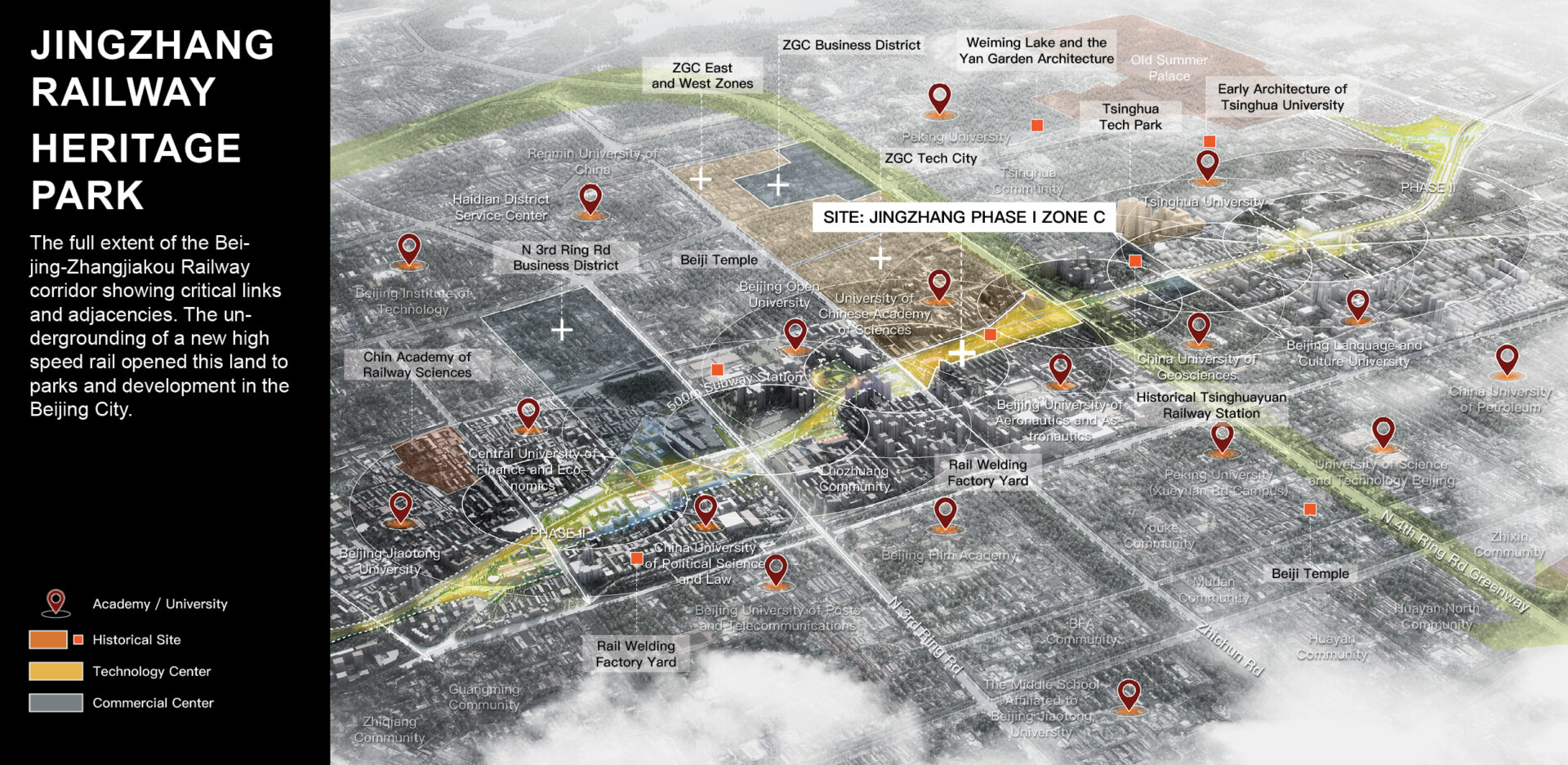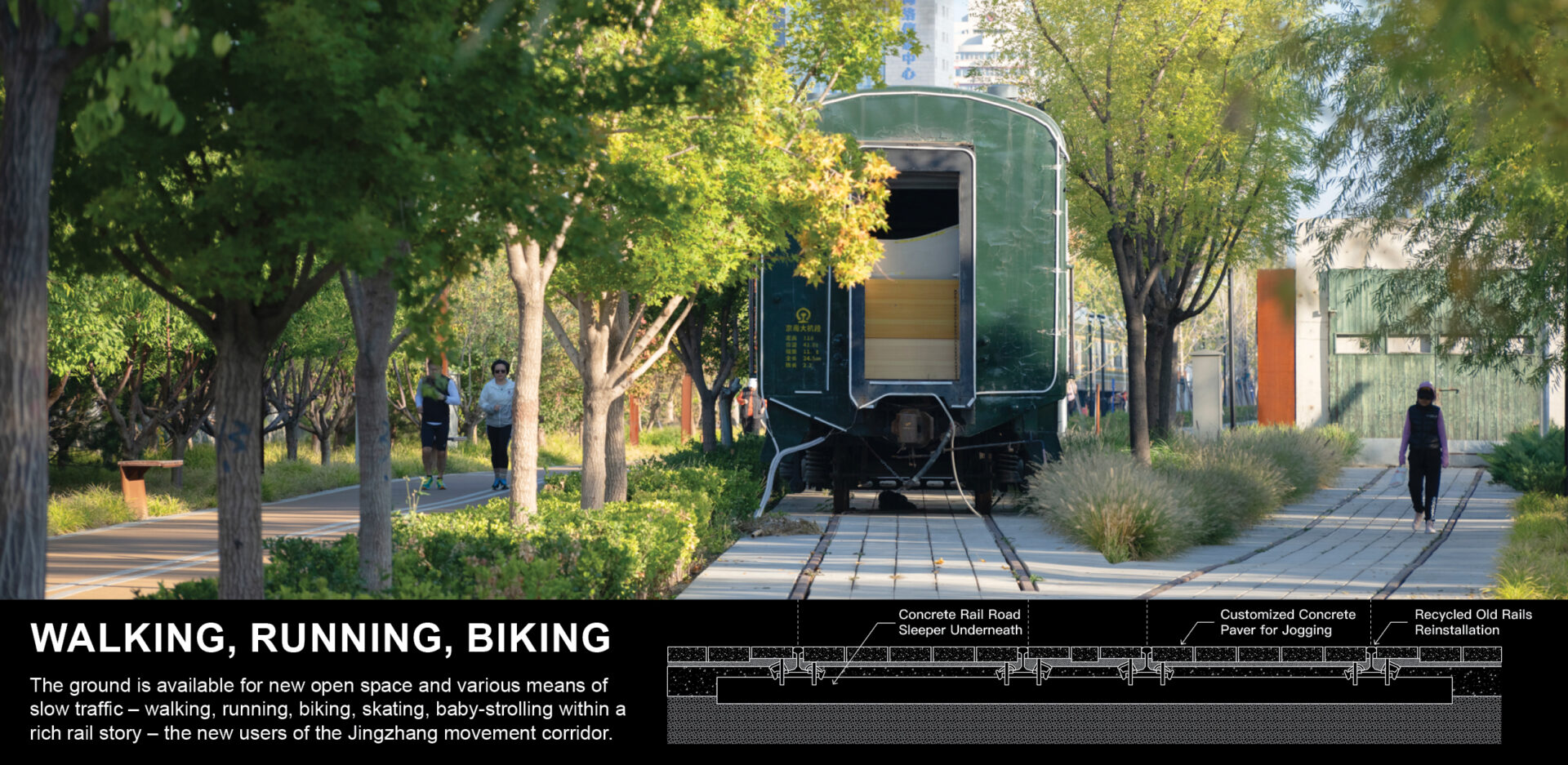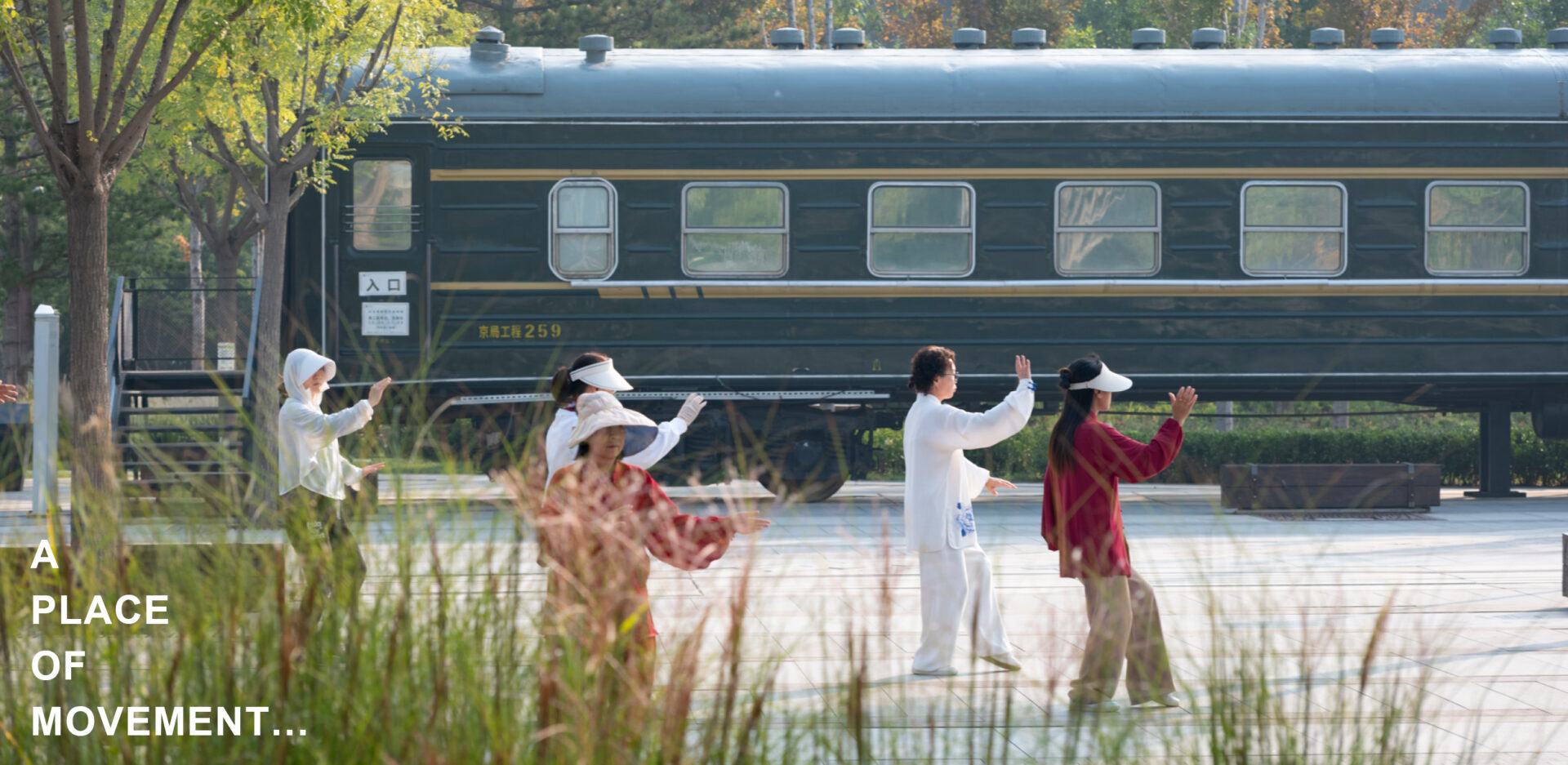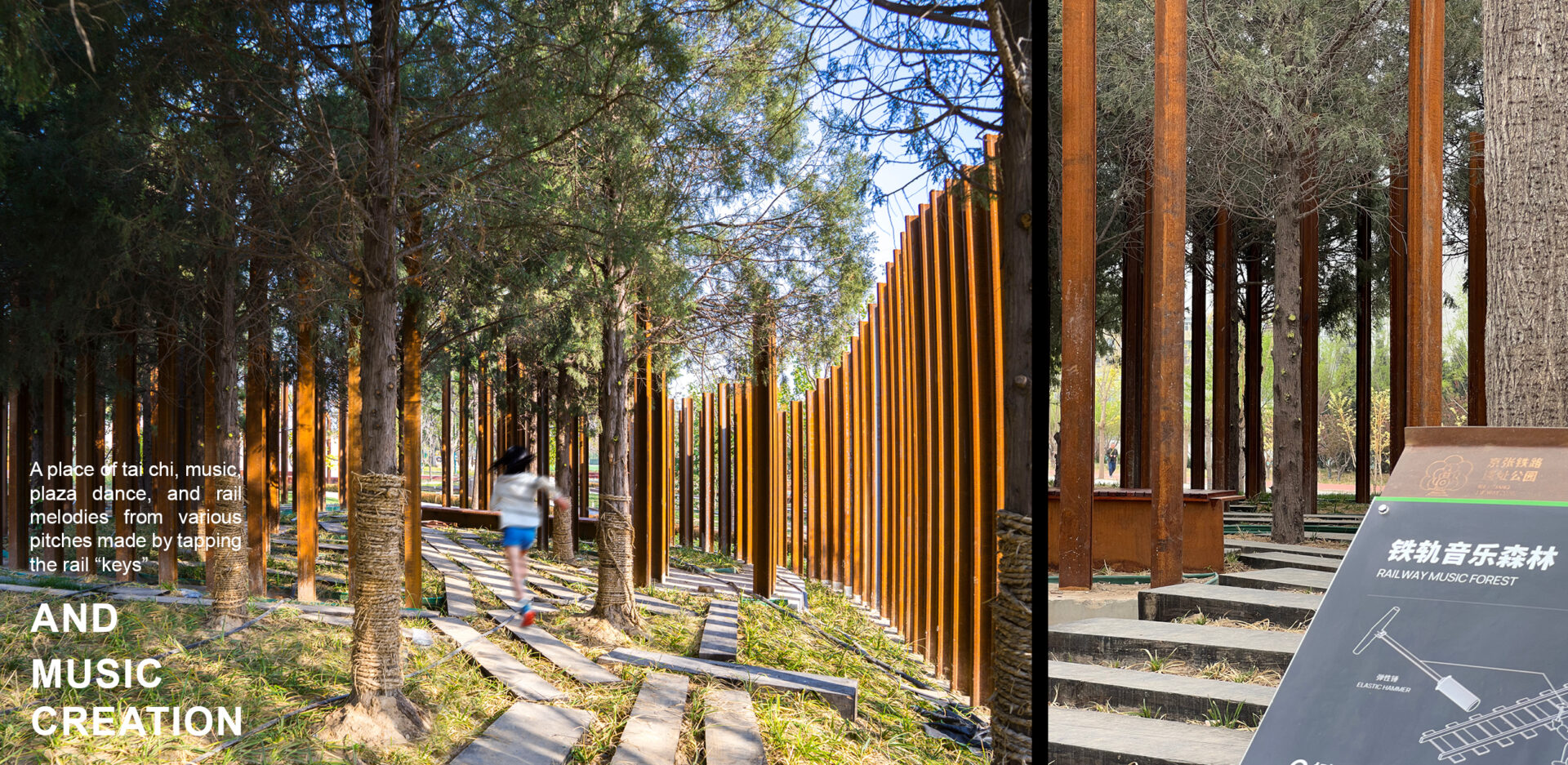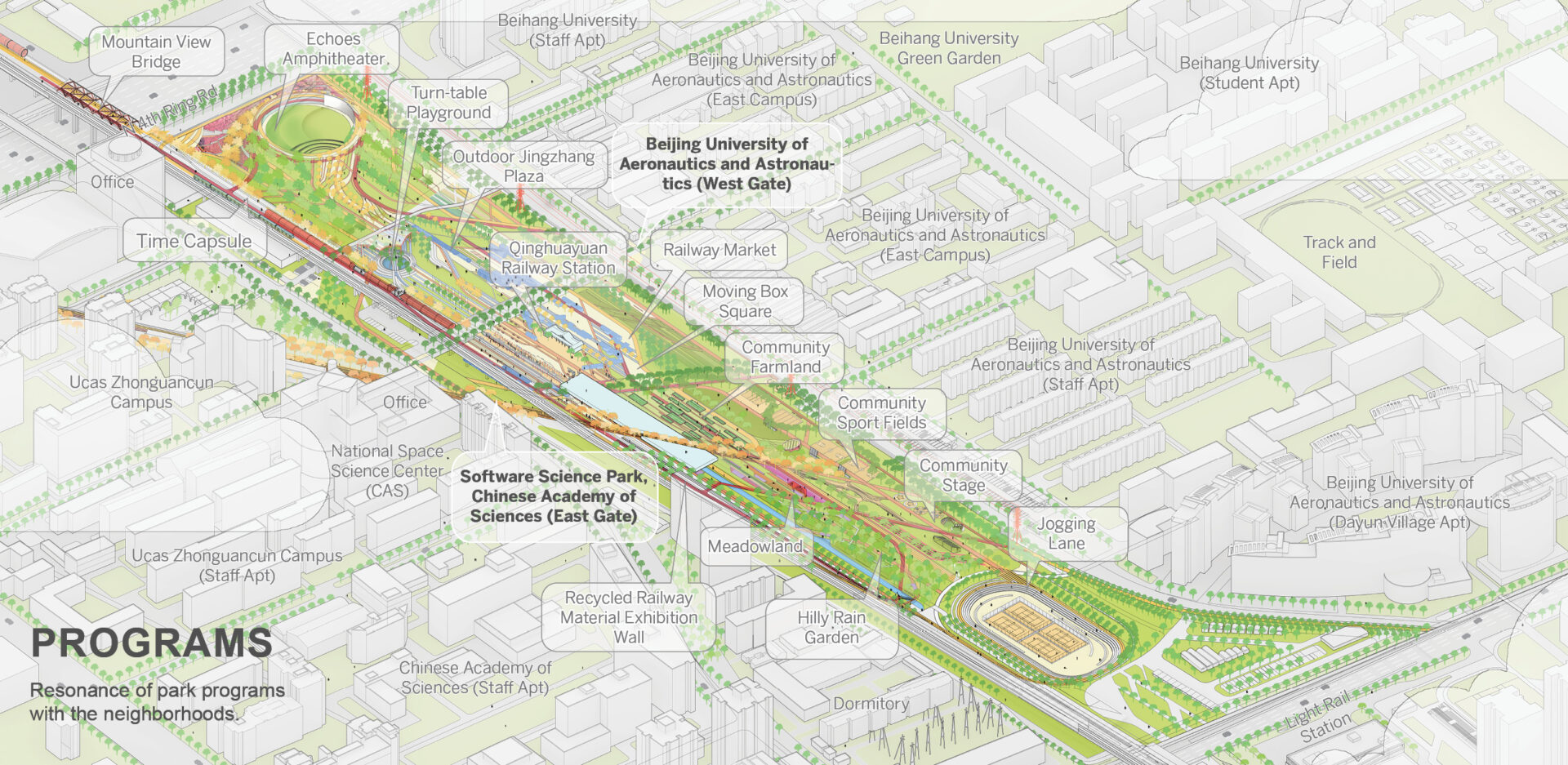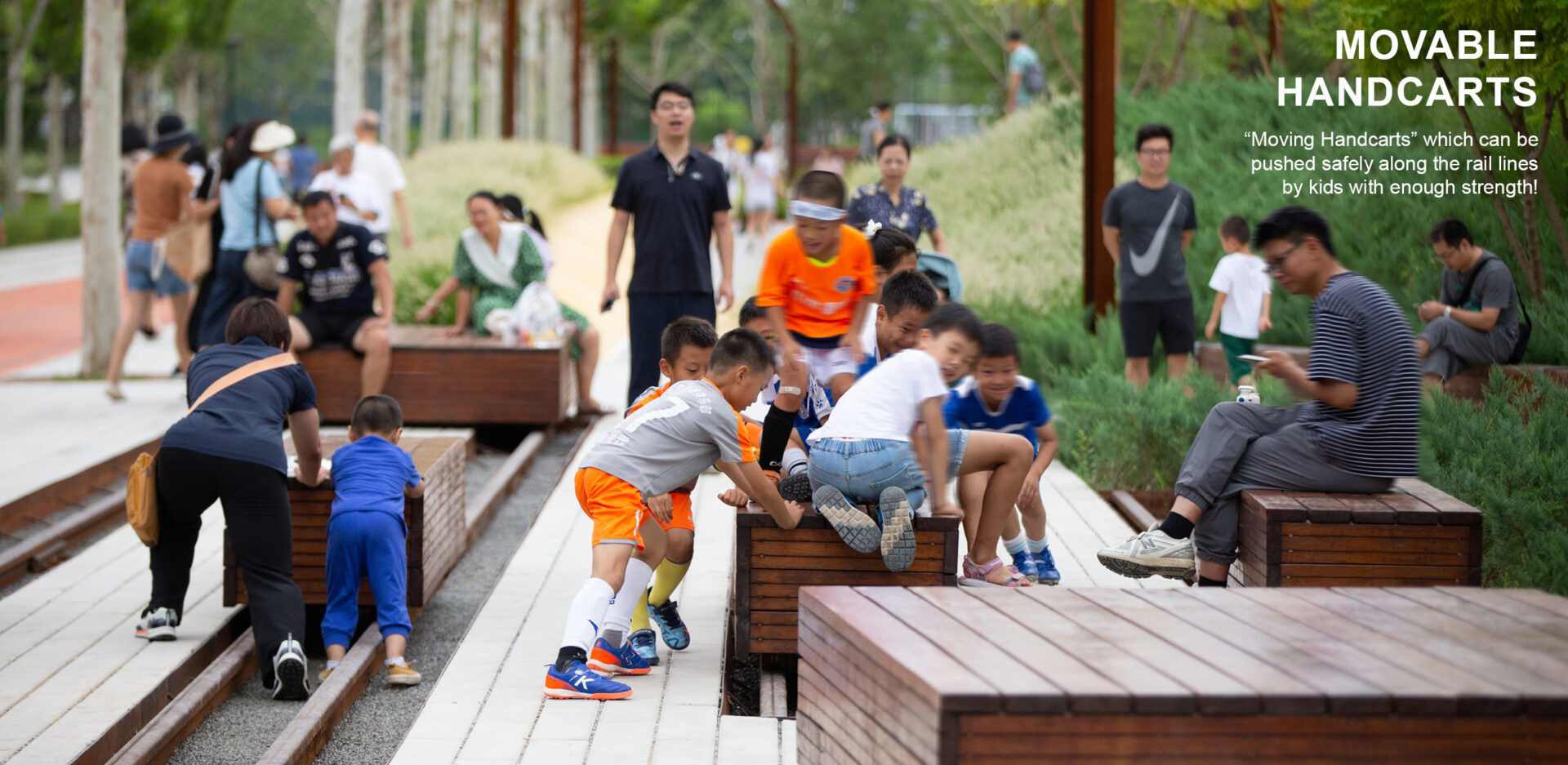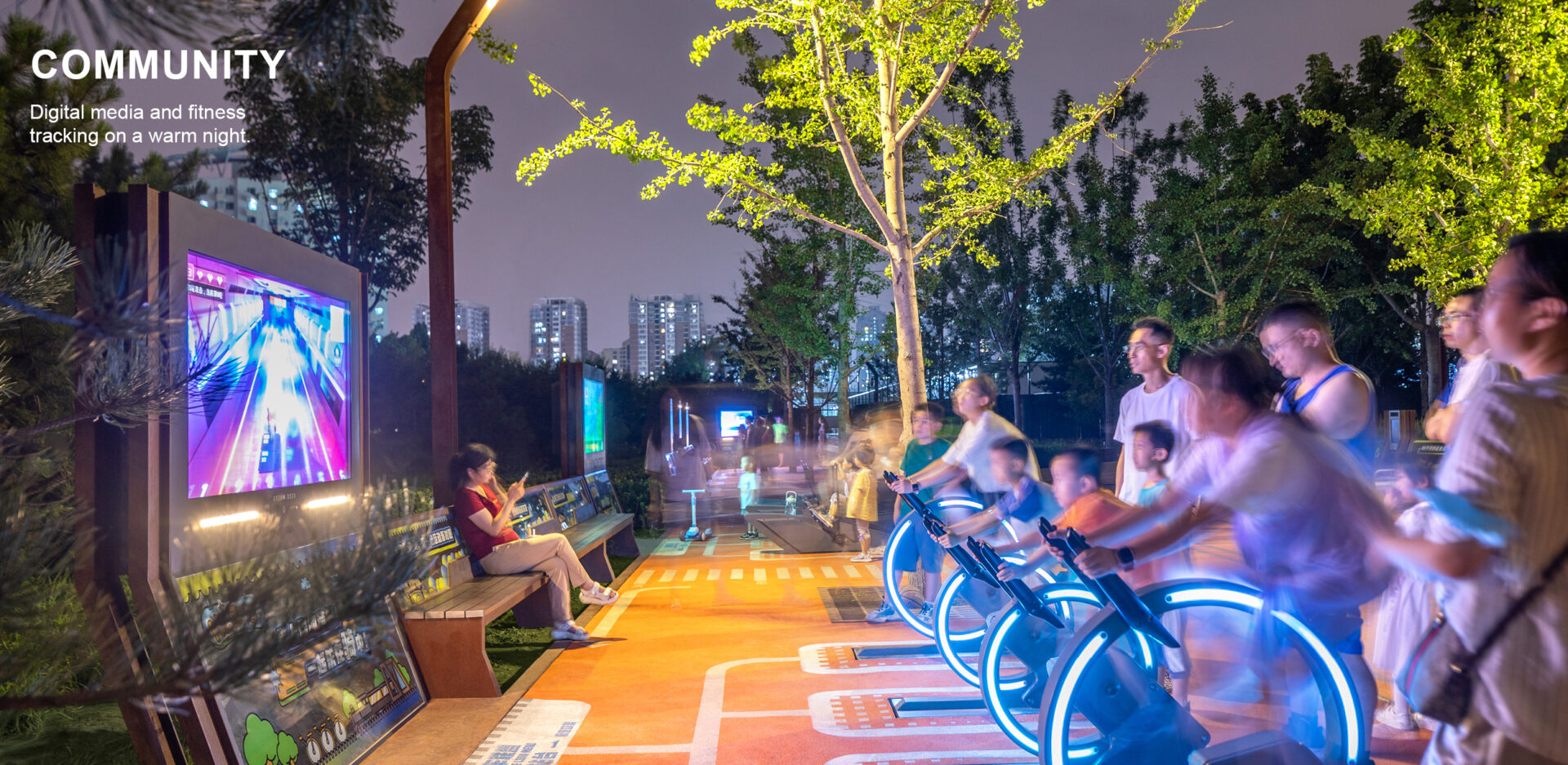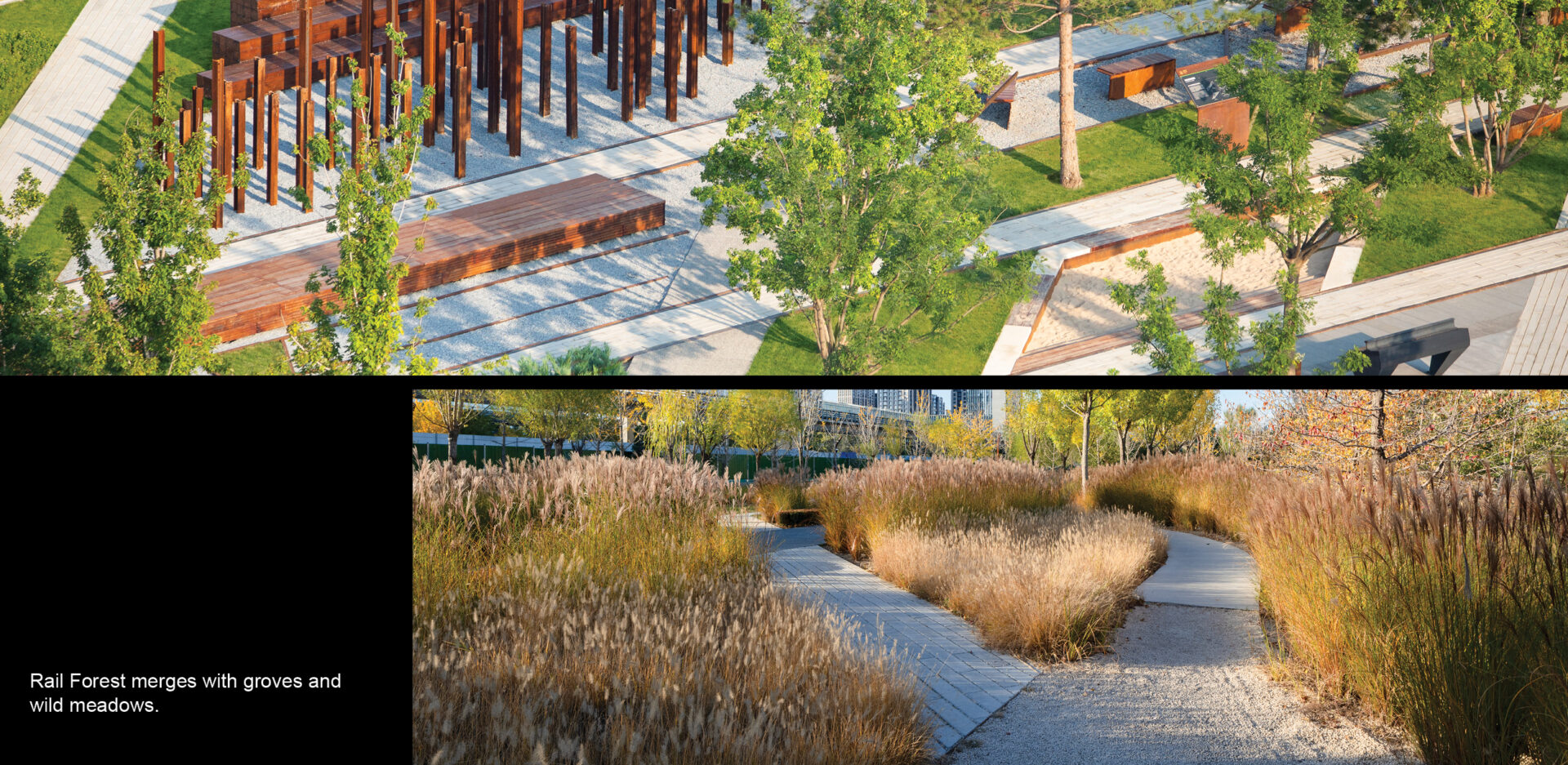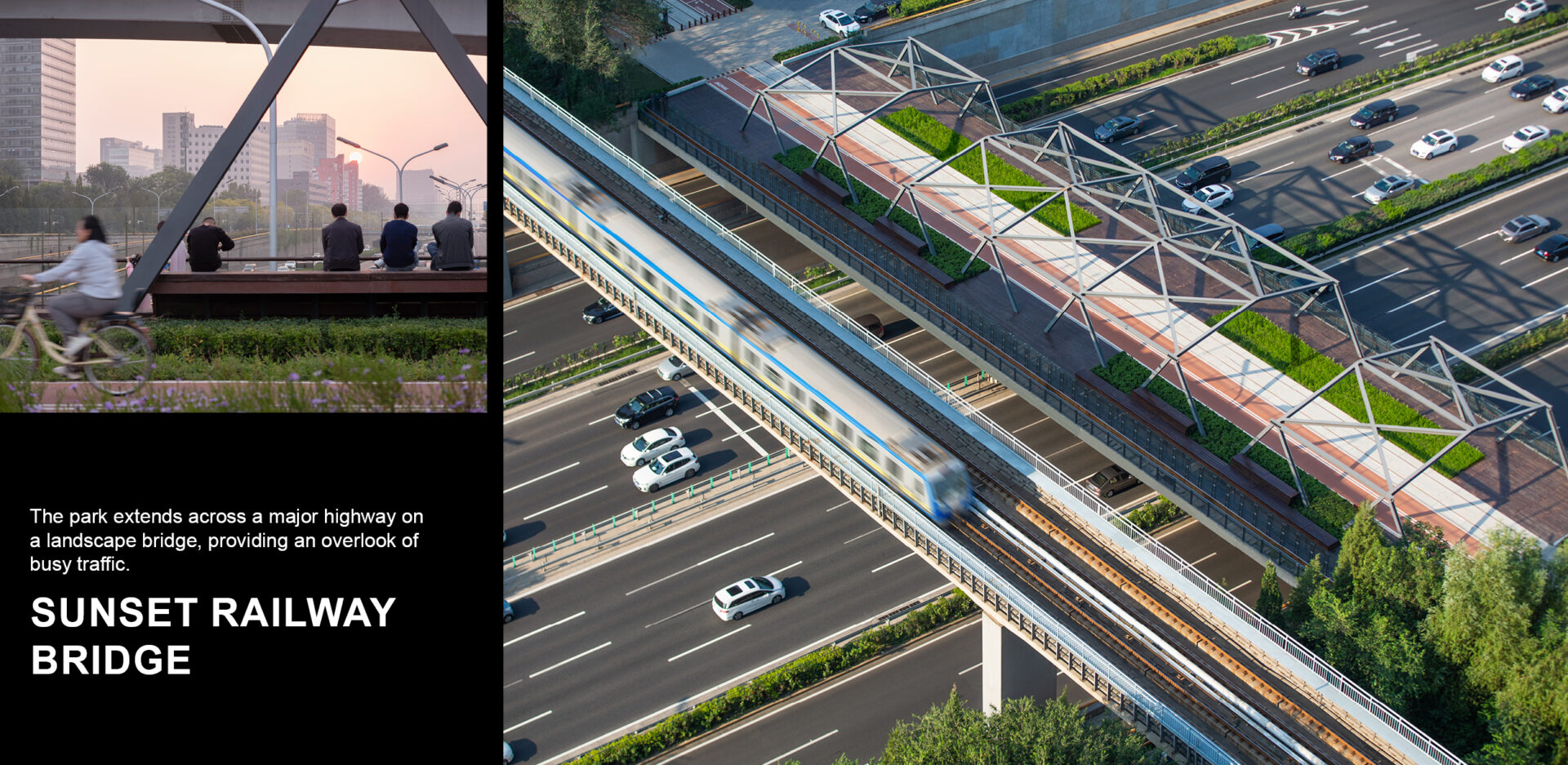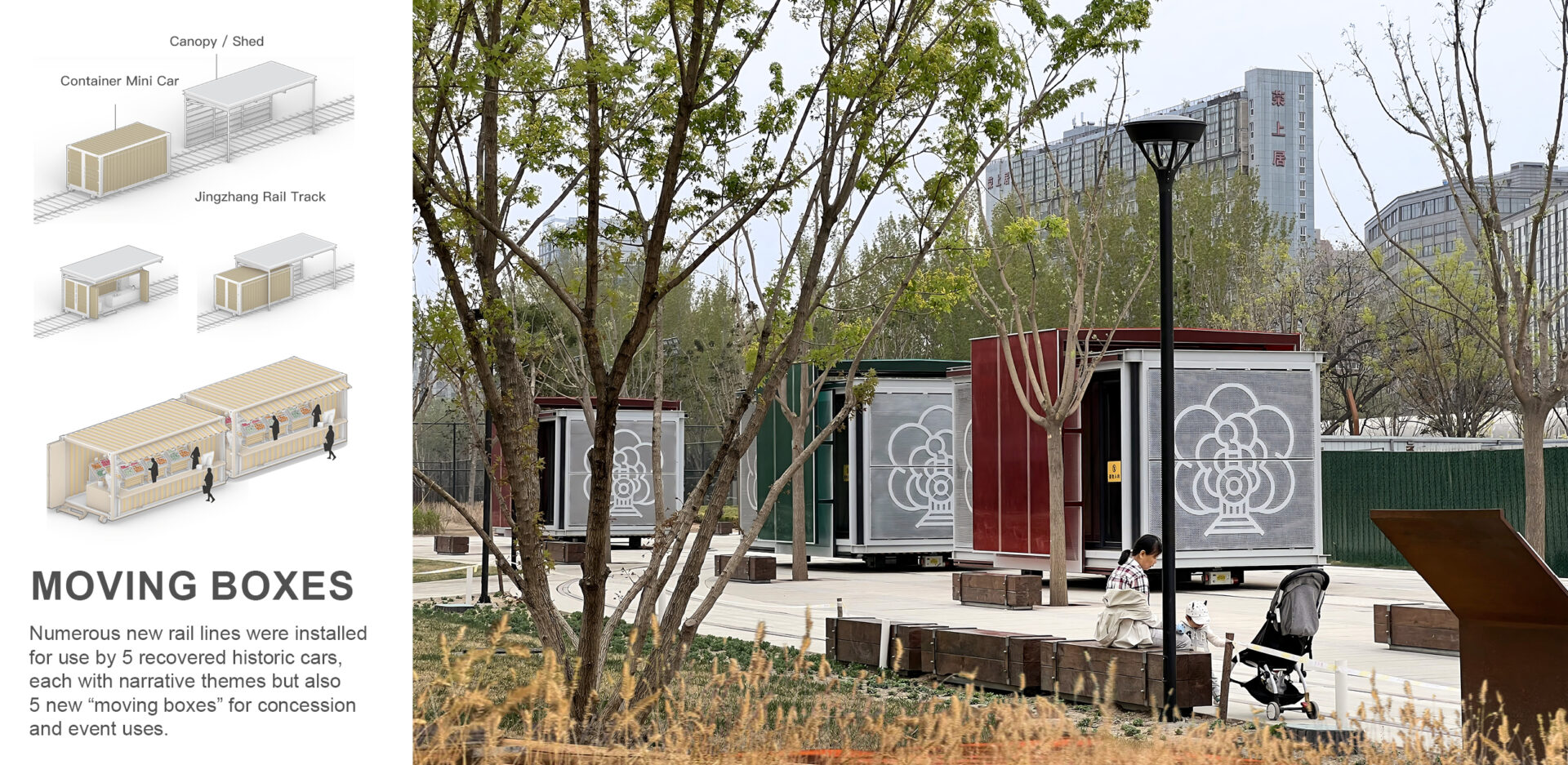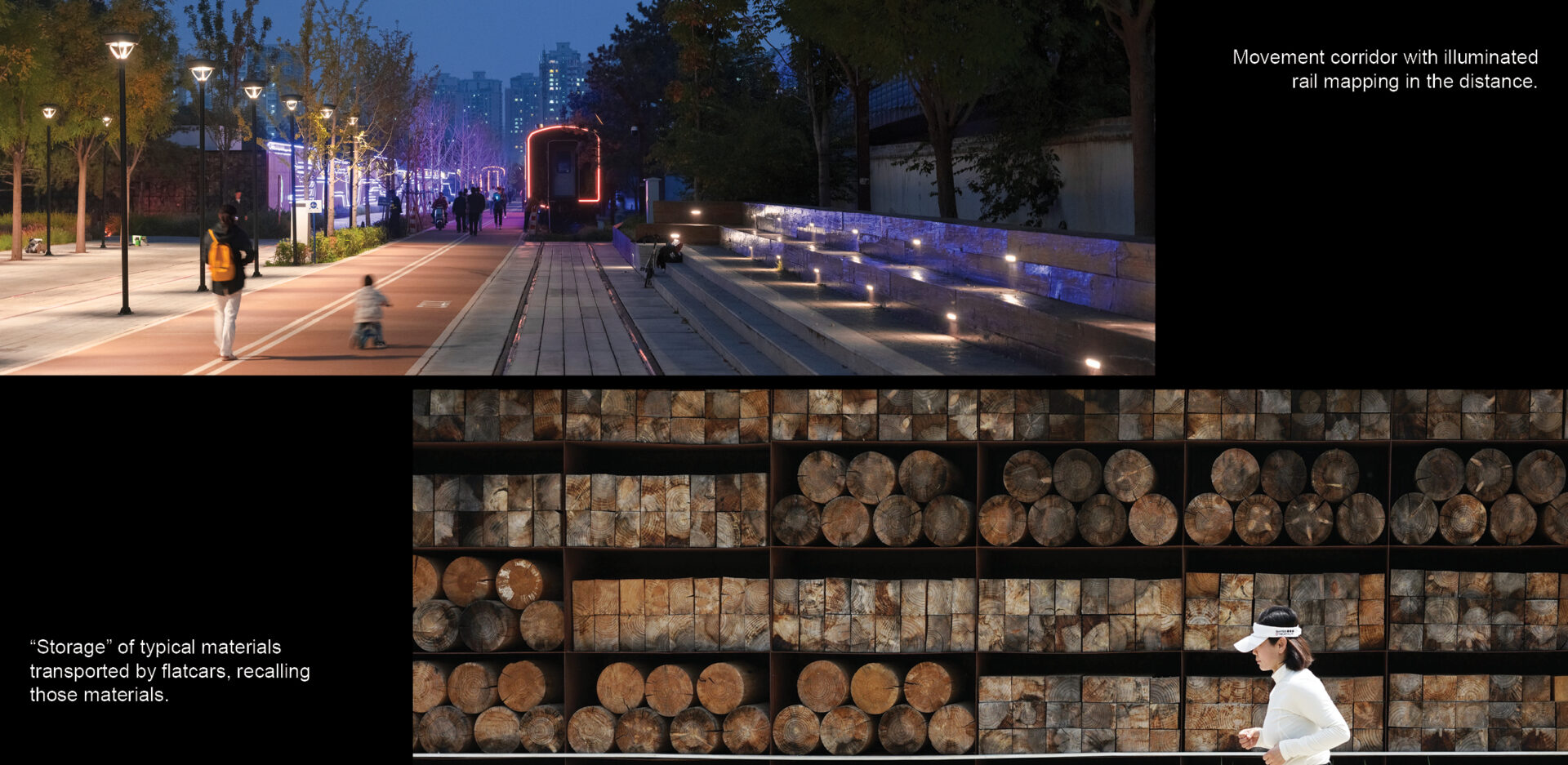When Jingzhang Railway first opened in 1909 it was decisive moment in the modernization of China. Up to that time China had been heavily influenced and frequently exploited by foreign powers such as Britain, France, Russia, and Germany. All infrastructure was engineered and financed by those countries including the early rail system. So, there was immense pride in this feat of native-born engineering in the heroic person of Zhan Tianyou as well as the use of locally manufactured steel and other materials.
100 years later, the Jingzhang Railway, the line had gone out of service and the corridor, in the center of Beijing, closed to the public. Meanwhile new transportation plans developed for both below-ground high speed rail and elevated light rail serving municipal destinations. This left the ground available for new open space and various means of slow traffic – walking, running, biking, skating, baby-strolling. These are all threaded through the new park and skillfully spliced into the adjacent neighborhoods and institutions. Areas of the city which had been divided for 100 years now have the chance to be joined together by the park.
In many ways the park is constructed from rails and rail artifacts, most of them recovered from dead storage and old sites including this one. The project incorporates repurposed train tracks, steel components and fittings, railway doors, concrete, and timbers. Reclaimed wood and salvaged stonework have also been utilized for retaining walls, while old railway signals, signage, and mechanical components have been integrated into the site wayfinding, seating areas, play structures, interactive walls, and display signage, preserving their historical identities and extending their lifecycle.
Numerous new rail lines were installed for use by 5 recovered historic cars, each with narrative themes but also 5 new “moving boxes” for concession and event uses. They can be moved about the site on rails for diverse types of gatherings or distributed throughout for individual uses including birthday parties. There are also “handcarts” which can be moved safely along the lines by kids with enough strength! Finally, there is a narrow-gauge rail line which will run through the park with various stops. The idea is to continue the dynamic of moving along rails but dedicated to new social uses. Navigating the numerous parallel pathways and rails allows endless routes, thinking and moving like a train.
Long lines of deciduous shade trees reinforce these lines and keep people cool in the summer. Linear beds of biofiltration grasses and perennials are inset within “sponge city” storm water detention zones and give a sense of the wild between tracks and pathways. The west end of the park is occupied by a large circular amphitheater formed by grassy berms for seating and for slides and the narrow-gauge train tracks around the rim. A semi-circular super wide screen allows for laterally moving videos to be projected and for the frequent concerts held there.
This is a heavily populated park. While China is still not a place where we see public workshops and post it notes, there was a very iterative and active web interaction with the community which led to many of the programs found here. And the interaction continues with constant public updates back and forth between organizers and the people including coming events and performances.
People are grateful and we think Zhan Tianyou would be proud – a second time.


